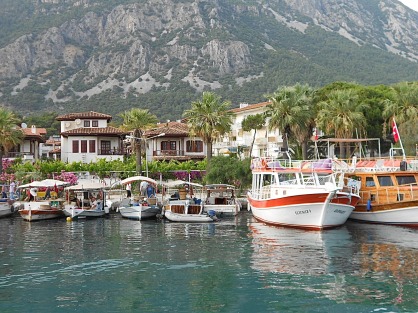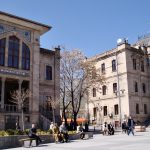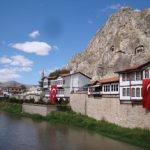“White Shore” Population: 2,500
Market day: Wednesday
Peaceful, secluded Akyaka is everything that Marmaris is not: namely, a small, quiet resort mostly put together with an eye to protecting the natural environment. It is officially one of Turkey’s handful of designated Citta Slow (Slow Cities) although what that means in practise is not necessarily very clear. Unfortunately it struggles with a slightly confusing split personality: in the UK it’s marketed as Akyaka (“White Shore”), but on most maps it appears simply as Gököva in homage to its position, snuggled up in the tightest corner of the glorious Gulf of Gököva and framed by the Sakara Tepe (Sakara Hill) and Gököva Plain.
As you drive down from the main Muğla to Marmaris highway you will immediately notice something different about Akyaka. In 1988 the area became Turkey’s first Specially Protected Area, thus ensuring that not all the wonderful pine trees would be chopped down to make way for hotels. Keep on going and you will come to a resort largely made up of discreet two or three-storey houses with whitewashed walls, pantile roofs, and wooden doors and balconies. It’s a very far cry from the concrete wilderness of Marmaris.
The architect behind this more sensitive development was Nail Çakırhan (1910-2008) who had been born in nearby Ula. Today much of Akyaka reflects the attractive architectural style that he developed. In particular the large but beautifully designed Otel Yücelen, a popular centre for outdoor sports holidays, nestles at the back of the village with a backdrop of mountains and forest. It was built by Çakırhan’s friend Hamdi Yücel Gürsoy, owner of the Yücelen Group which runs several local hotels and hospitals.
The good news is that Akyaka is not a high-society hotspot like Bodrum with prices that reflect the pockets of the Turkish glitterati. Instead it’s popular with Turkish families for whom many small pensions continue to exist.
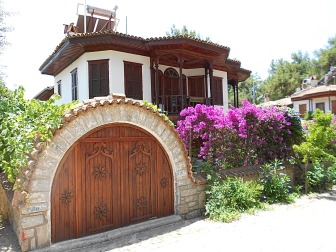 Around town
Around town
Detail is everything when it comes to the Akyaka look. Aside from the pretty wooden balconies, it’s hard to miss the tall brick chimney stacks with their pyramidal tops, copied from Muğla. A few houses, including the Nail Çakırhan and Halet Çambel Gallery, also feature huge wooden gates with two smaller openings cut into them (kuzu kapıları). In the past, the big gate would have been opened to admit carts, while the smaller ones would have been used for pedestrian comings and goings. Nowadays, of course, it’s all just for rather beautiful effect.
Akyaka lacks specific tourist attractions, although the waterside promenade and thin stretch of sand backed by mountains are very appealing. There are also two creeks that dissolve into the sea here: the Kadın Azmak (Woman Creek) is right in town while the more oddly-named Kanlı Azmak (Bloody Creek) is just to the south.
In summer it’s possible to take a boat ride along both rivers, a great opportunity for bird-lovers who may get to see the occasional moorhen and ruddy shelduck alongside the more familiar mallards and white farmyard ducks that vie with each other for the titbits handed out by passers-by. At certain times of year you may be lucky enough to see pelicans or flamingoes. Jays, kingfishers, chaffinches and black redstarts are more regular fixtures.
Check carefully where you will be going – the price sounds cheap until you discover that you will only be visiting one of the creeks. 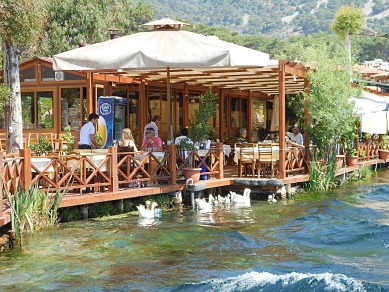
Provided the chilly wind called Deli Mehmet (“Crazy Mehmet”) is not blowing too strongly, more adventurous visitors can also take to the river in kayaks.
Alternatively, day trips out of Akyaka take in Sedir Adası (island), known for its super-soft sand and Jacuzzi-warm waters. Some stop for lunch at Azmakbaşı, where the Halil scoops the accolades as the best of a bunch of small fish restaurants; some boats just moor offshore. Beware a lot of very loud music and boats with unopenable glass panels in their sides.
Akyaka’s creeks are flanked by reed-beds that are thought to have given rise to the myth of Pan and Syrinx. According to the ancient Greeks, Pan, a being who was half man and half goat, was wandering along the riverbank one day when he spotted the nymph Syrinx and fell in love with her. Not to be persuaded by his overtures, Syrinx prayed to her fellow nymphs to rescue her, whereupon they turned her into a reed. Left with only the sound of the wind rustling through the reeds to remind him of his beloved, Pan eventually cut some of them and shaped them into the first set of panpipes.
Of course Akyaka does also have some unsightly development, including a car park thoughtlessly plonked beside the river. Close by, however, small boats bob up and down on the water selling the same sort of mouth-watering fish sandwiches as can be enjoyed in İstanbul.
Azize Ethem’s memoir Beyond the Orchard describes life in the village of Dereköy before it was subsumed into Akyaka.
Akyaka looking vaguely familiar? That could be because it was used as the setting for Yüksel Aksu’s 2006 hit film Dondurmam Gaymak (Ice Cream, I Scream), which told how a local ice-cream salesman struggled to beat off competition from the big manufacturers in the early 1990s.
Around Akyaka
While in Akyaka you can go paragliding off the nearby Sakar Geçidi (Sakar Pass, 670m). Windsurfing and kiteboarding are also on offer.
Behind Akyaka in the suburb of Kozlukkuyu some remains of the ancient Idyma are still visible, mainly in the form of rock-cut tombs; pieces of marble masonry from the site are collected outside the Belediye building in town. A medieval castle also survives on a ridge of rock – it’s clearly visible from the junction with the Marmaris road.
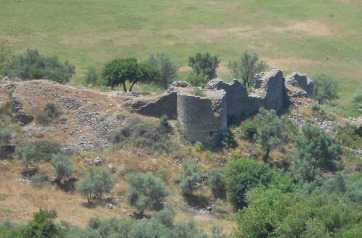 Eating
Eating
A few restaurants offering fish and other familiar Turkish menu items line the small sandy beach. For cheaper fare you will need to duck inland and look for the unflashy places offering fish sandwiches (balik ekmek).
In theory the nicest place for a fish sandwich should be one of the floating restaurants but when I visited only one was operating and only a few tables looked onto the water. Most faced the wasteland opposite where a few rather grim branded plastic tables had been set up.
As elsewhere in this corner of Turkey more stylish places are starting to appear. I had a very decent Akhisar köfte (meatball) supper at a restaurant sporting rather unlikely pink decor.
Sleeping
Bağa Boutique Hotel
A small, secluded hotel beside the icy waters of a stream that flows into the sea here. Rooms are generously proportioned, and there’s a restaurant on site. You can swim off decks and relax on sun loungers on the private beach. You need a car for getting in and out of Akyaka itself.
Tel: 0252-243 4550, www.baga.com.tr
Orhan Apart Pansiyon. Tel: 0252-243 4177
Transport info
There are regular dolmuşes from Muğla to Akyaka but none directly from Akyaka to Marmaris (32km); you need to get out of the dolmuş at the junction with the main road and wait for another coming down from Muğla, hopefully with a spare seat. Ditto if you want to go to Bodrum.
In Muğla don’t make the mistake of getting into the Gökova dolmuş – that will take you to the purely residential settlement a little apart from Akyaka.
Dalaman Airport is 68km away.
Day trip destinations
Sedir Adası (Cleopatra’s Beach)
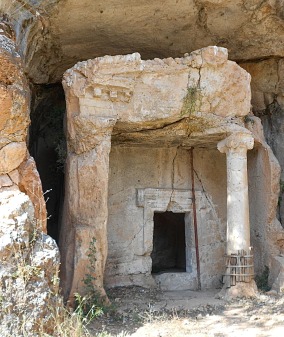 Tomb from ancient İdyma
Tomb from ancient İdyma
